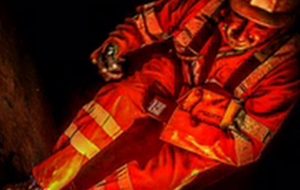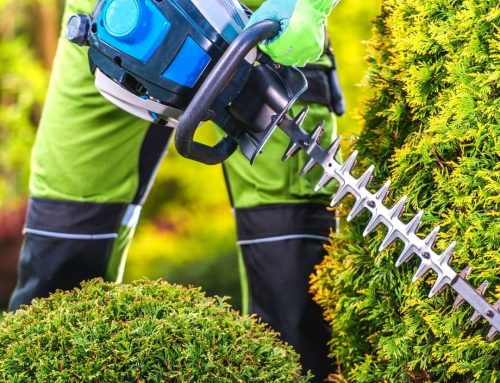There are many different types of confined spaces training courses available but before talking about the different options it is important to understand what is classed as a confined or limited space.
What is a confined space?
The definition of a confined space is a space that is not fit for human habitation. It is substantially enclosed (though not always entirely), and serious injury can occur from hazardous substances or dangerous conditions within the space or nearby (e.g. lack of oxygen). It can be any space of an enclosed nature.
Some confined spaces are fairly easy to identify, eg enclosures with limited openings:
■ storage tanks;
■ silos;
■ reaction vessels;
■ enclosed drains;
■ sewers.
Others may be less obvious, but can be equally dangerous, for example:
■ open-topped chambers;
■ vats;
■ combustion chambers in furnaces etc;
■ ductwork;
■ unventilated or poorly ventilated rooms.
It is not possible to provide a comprehensive list of confined spaces. Some places may become confined spaces when work is carried out, or during their construction, fabrication or subsequent modification.
Confined spaces can be deadly
A number of people are killed or seriously injured in confined spaces each year in the UK. This happens in a wide range of industries, from those involving complex plant to simple storage vessels. Those killed include people working in the confined space and those who try to rescue them without proper training and equipment.
There is specific legislation for Employers to ensure the safety of their employees and others.
What is the Legislation?
Under domestic law, The Health and Safety at Work etc Act 1974 covers employees and other and is the employers responsibility to ensure safety which is reinforced by regulations.
The Confined Spaces Regulations 1997
Apply where the assessment identifies risks of serious injury from work in confined spaces.
These regulations contain the following key duties:
- avoid entry to confined spaces, e.g. by doing the work from the outside;
- if entry to a confined space is unavoidable, follow a safe system of work; and
- put in place adequate emergency arrangements before the work start
The Management of Health and Safety at Work Regulations 1999
These require employers and self-employed people to carry out a suitable and sufficient assessment of the risks for all work activities for the purpose of deciding what measures are necessary for safety. For work in confined spaces this means identifying the hazards present, assessing the risks and determining what precautions to take.
What are the dangers from confined space entry?
Dangers can arise in confined spaces because of the following issues.
■ A lack of oxygen.
This can occur:
▬ where there is a reaction between some soils and the oxygen in the atmosphere;
▬ following the action of groundwater on chalk and limestone which can produce carbon dioxide and displace normal air;
▬ in ships’ holds, freight containers, lorries etc as a result of the cargo reacting with oxygen inside the space;
▬ inside steel tanks and vessels when rust forms.
■ Poisonous gas, fume or vapour.
These can:
▬ build-up in sewers and manholes and in pits connected to the system;
▬ enter tanks or vessels from connecting pipes;
▬ leak into trenches and pits in contaminated land, such as old refuse tips and old gas works.
■ Liquids and solids which can suddenly fill the space, or release gases into it, when disturbed. Free-flowing solids such as grain can also partially solidify or ‘bridge’ in silos, causing blockages which can collapse unexpectedly.
■ Fire and explosions (eg from flammable vapours, excess oxygen etc).
■ Residues left in tanks, vessels etc, or remaining on internal surfaces, which can give off gas, fume or vapour.
■ Dust present in high concentrations, eg in flour silos.
■ Hot conditions leading to a dangerous increase in body temperature.
Some of the above conditions may already be present in the confined space.
However, some may arise from the work being carried out, or because of ineffective isolation of plant nearby, eg leakage from a pipe connected to the confined space. The enclosure and working space may increase other dangers arising from the work being carried out, for example:
■ machinery being used may require special precautions, such as provision of dust extraction for a portable grinder, or special precautions against electric shock;
■ gas, fume or vapour can arise from welding, or by use of volatile and often flammable solvents, adhesives etc;
■ if access to the space is through a restricted entrance, such as a manhole, escape or rescue in an emergency will be more difficult (see Emergency procedures).

Confined Spaces Training
Are people suitable for the work?
Do they have sufficient experience of the type of work to be carried out, and what training have they received? Where risk assessment highlights exceptional constraints as a result of the physical layout, are individuals of suitable fitness? The competent person may need to consider other factors, eg claustrophobia or fitness to wear breathing apparatus, and may need to seek medical advice on an individual’s suitability.
Confined Spaces Training Course
Kentra Training can deliver Awareness courses, Low Risk and Medium Risk training courses.
The Medium Risk course is delivered using a mixture of both classroom based tutorial and practical testing and a final course assessment. At our training centre we have a purpose built and accreditation approved Confined Spaces area, including the crawl space and access requirements. At our centre all the equipment and breathing apparatus is provided for your use.
Course Aims and Objectives
To have a basic understanding of the industry, the dangers of working in confined spaces and to be able to enter and traverse a confined space individually and as part of a team in a trained, competent manner. Typical environments for a Medium Risk Confined Space include but are not restricted to unobstructed chambers, manholes, wet wells, vertical shafts and tanks/vessels or any area that require horizontal entry.
Confined Space Training Facility
The Confines Spaces awareness course is classroom based and aimed towards Managerial or Supervisor level for senior staff to identify the hazards present, recognise a confined space and to establish the need for Risk Assessment, a Safe System of work and determining what precautions to take.
For the Low and Medium Risk courses these are for the people entering these spaces and the training required for them to be able to operate with in these areas safely. Training can be conducted on-site however a safe Confined Space is required for the practical elements of the training courses.
Our Confined Space Training Facility, is approved by our Awarding Body NPORS. Their accreditation for N702A Low Risk Confined Spaces or N702B Medium Risk Confined Spaces certification is available through Kentra Training. The training facility includes the use of a tripod and winch, a safe and engaging crawl space which is traversed by all delegates to complete a number of different tasks. Whilst using the emergency escape and breathing apparatus to provide a Confined Space simulation.

Contact us
Related courses include Working at Heights, Safe use of Harnesses and in some cases Safe use of Ladder training. We also provide Report of Thorough Examination courses, for the inspection of lifting accessories. This enables you to check and certify your own harnesses etc.
At Kentra Training we are happy to discuss all elements of the training we provide and to talk through all the different Risk training options and courses available so please just give us a call on 01606 832 556 or drop us an email via the contact us page. Don’t worry we hate spam too so will not ever sell your details or bombard you with sales stuff, we’re just happy to help.
The Kentra Training Team.

Other Confined Space Blogs include







Hi
Can a company health and safety representative,down grade a manhole to allow access for employees / subcontractors even though they dont have a confined space certificate?
Hello Peter, Thank you for contacting us, we have emailed you directly with a reply to your question. Have a great day. Kentra Training